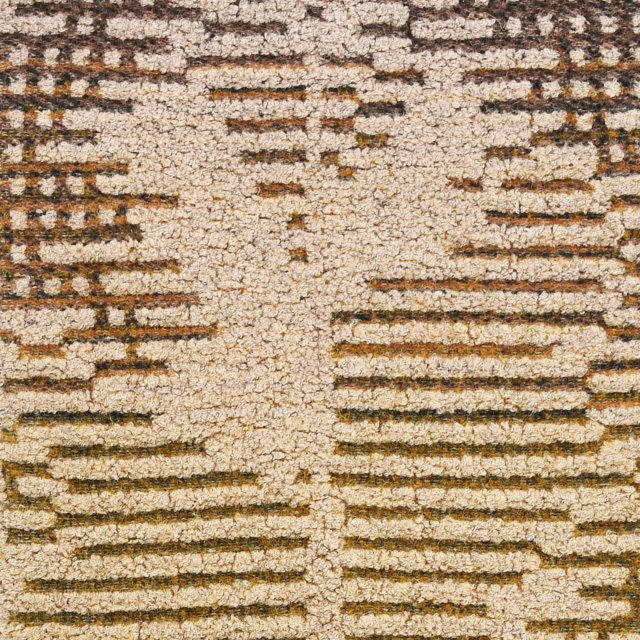My experience working as a fashion designer for a number of well-known brands, made me aware of the extensive lack of concern or interest in ethics and sustainability. Good aesthetics and functionality are key driving forces in creating consumer desire and ultimately sales, therefore businesses often choose to focus just on this, as ethics alone lacks selling power. Sustainable fashion doesn’t have the most stylish reputation. ‘All to often the words “eco fashion” conjure up images of potato-sack pants, awkwardly embroidered peasant tops and Dad-approved sandals'((Fishman, E. (2014) Lucky Mag: 11 sustainable brands that are changing the face of eco-friendly fashion [Online] Available from: http://www.luckymag.com/style/2014/04/eco-friendly-sustainable-fashion [Accessed 2 Dec 2014].)). This is often due to too much attention being put on ethics with a lack of design skills, market knowledge and consumer understanding. ‘Style is supreme in the world of fashion. Ethical companies must recognise this and focus on innovation to make sustainability on trend'((Angel, S. (2013) The Guardian: Sustainable fashion needs to be design-led [Online] Available from: http://www.theguardian.com/sustainable-business/blog/fashion-style-sustaniability-ethical [Accessed 3 Dec 2014].)). Berber Soepboer, cited in A Fashion Odyessey, mentions the importance of design; ‘Nobody is going to buy something ugly just because it is sustainable. That is not a very sustainable thought. Something has more value if I find it both beautiful and useful, rather than just sustainable'((Corstanje, C. (2013) ‘Sustainable design as a powerful force to change’. In: Brand, J. and Teunissen, J. eds. A fashion odessey: progress in fashion and sustainability. Arnhem: ArtEZ Press: 276.)).
ETHICS & AESTHETICS, in my opinion, need to be considered equal for long term business success. Jean-Luc Godard cited in Design for Human Scale says, ‘It may be true one has to choose between ethics and aesthetics, but it is no less true that whichever one chooses, one will always find the other at the end of the road’((Papanek, V. (1983) Design for human scale. New York: Van Nostrand Reinhold: 70.)). Designers have the opportunity to bring the two together, by using their design skills and making conscious ethical choices throughout the development process. In 2012 I developed an idea for a business designing and producing knitted homeware. I wanted sustainability to be a key focus, because it is something I’m passionate about and I felt there was a gap in the market for sustainably produced textiles with modern aesthetics. I soon realised the huge challenges I faced, because currently the industry is not geared towards these goals and it will be a slow evolving process to get there. I had to decide on an area of sustainability to focus on, as I realised I wouldn’t be able to achieve everything at once.
‘Sustainable fashion begs the question, “sustaining what?”
While most might answer the “environment,”
a less obvious but just as important answer is “people.”‘((Hethorn, J. (2008) ‘Consideration of consumer desire’. In: Hethorn, J. and Ulasewicz, C. eds. Sustainable fashion – why now?: a conversation about issues, practices, and possibilities. New York: Fairchild books: 53.))
I decided to focus on the human and ethical aspect, in an attempt to bring a greater connection between the designer, maker and user. I wanted to tell the story of how my designs were produced, in order to open the eyes of the consumer by providing an insight into the journey of each products creation. I didn’t want to be a Designer Maker, as much as I like making when designing, I never wanted to be the factory and have to mass produce the same item multiple times. This created many challenges, because starting on a small scale doesn’t fit well with the current manufacturing system. Finding suppliers who have the same ethical and sustainability aspirations, and are willing to work on small quantities is not an easy task. I attempted to work with suppliers in Rwanda, Central and South America, as well as more locally in the UK, but in the end faced too many challenges to proceed with the project. I want to take what I learnt from the experience and use it to help develop my way of working as a designer with consideration to sustainability issues.
‘The decisions made by designers will inevitably have social impacts'((Textiles Futures Research Centre (2014) Ted7. [Vimeo] Available from: http://vimeo.com/107728208 [Accessed 7 Dec 2014].)). If a design decision is made purely based on aesthetics, then it could potentially have a negative ethical impact. Awareness of the problems is the first step in trying to solve them. The Ten((Earley, R. (2014) Becky Earley: the ten [Online] Available from: http://www.beckyearley.com/the-ten/ [Accessed 7 Dec 2014].)) are strategies developed by Rebecca Earley, Kay Politowicz and the team at Textiles Environment Design (TED)((Textiles Environment Design (2014) TED research [Online] Available from: http://www.tedresearch.net/ [Accessed 7 Dec 2014].)), that aims to inform designers helping them to understand and consider ways of creatively building a more sustainable future for the textiles and fashion industry. This video((Textiles Futures Research Centre (2014) Ted7. [Vimeo] Available from: http://vimeo.com/107728208 [Accessed 7 Dec 2014].)) looks at design for ethical production and is part of a series of ten short animated films that address a variety of sustainability issues.
Designers, retailers and manufacturers need to take responsibility for the sourcing of their products. However, the system is very complex, making it challenging to know how to tackle the social and environmental issues. Also, businesses need to make money and ‘a key reason for misbehaviour in the retailing area is the incredible pressure companies are under to perform at profitable levels'((Paulins, V. and Hillery, J. (2009) Ethics in the fashion industry. New York: Fairchild Books: 53.)). For real change to be made consumers need to show a desire for ethical goods through their purchasing choices. This demand will make it economically viable for businesses to make sustainable decisions. However, customer awareness is needed, as well as a willingness to pay a premium for products ethically produced, due to higher costs incurred, such as paying a fair wage to workers((Paulins, V. and Hillery, J. (2009) Ethics in the fashion industry. New York: Fairchild Books: 126.)). ‘Consumers who become advocates for fair labor have the potential to exert powerful influences over manufacturing decisions and organisations'((Paulins, V. and Hillery, J. (2009) Ethics in the fashion industry. New York: Fairchild Books: 158.)).
FAIR TRADE ‘is a strategy for poverty alleviation and sustainable development, which creates opportunities for producers who have been economically disadvantaged or marginalized by the conventional trading system'((Pachacuti (2014) Fair Trade: creating opportunities [Online] Available from: http://www.panamas.co.uk/fairtrade/pachacuti-and-fair-trade/ [Accessed 3 Dec 2014].)). Certifcation and regulation exists to protect the most vulnerable people who are easily exploited. ‘The ethical results of Fair Trade products include improved quality of life for workers, enhanced working conditions and job security, and positive contributions to environmental sustainability'((Paulins, V. and Hillery, J. (2009) Ethics in the fashion industry. New York: Fairchild Books: 126.)). The fact that it exists ‘is an indicator of an economic and trade system that is essentially off-track: a system that is so large that connections within the supply chain have been lost; where a designer or company no longer knows the maker'((Fletcher, K., Grose, L. & Hawken, P. (2012) Fashion and sustainability: design for change. London: Laurence King Publishing: 21.)).
‘The best design work
– and the design work with the greatest longevity –
is formed through partnerships, not short-term engagements’((Behar, Y. (2011) ‘Foreword’. In: Blossom, E. Material change: design thinking and the social entrepreneurship movement. New York: Metropolis Books: 6.)).
Artisans in developing countries are clamouring for work, but secure contracts and long-term export markets can’t be guaranteed. Consumer trends can impact demand and the changing whims of the marketplace can have disastrous repercussions((Imhoff, D. (1998) ‘Artisans in the global bazaar’. Whole Earth. Fall 1998, (94): 76.)). Extreme poverty forces people to take whatever they can get, long hours for low wages is better than no income at all. ‘Consistent work in sweatshops in cities and special economic zones casts a potent lure, drawing artisans away from cottage industries and farm fields.’((Imhoff, D. (1998) ‘Artisans in the global bazaar’. Whole Earth. Fall 1998, (94): 76.)) ‘Although most consumers do not want to think that what they wear is made by children or mistreated employees who do not even earn a living wage, the fact is that this occurs regularly throughout the world'((Paulins, V. and Hillery, J. (2009) Ethics in the fashion industry. New York: Fairchild Books: 145.)).
‘Designers have the power and imagination to bring
‘making’ and social benefits to a community or neighbourhood’((Textiles Futures Research Centre (2014) Ted7. [Vimeo] Available from: http://vimeo.com/107728208 [Accessed 7 Dec 2014].)).
Ethical businesses without design input often struggle with aesthetics as they focus on supporting artisans without knowing or thinking about fashion trends and customer desire in the Western world. ‘A color palette or sizing, for example, can make or break a product, yet seem arbitrary or fickle to an artisan'((Imhoff, D. (1998) ‘Artisans in the global bazaar’. Whole Earth. Fall 1998, (94): 76.)). They ‘are separated from the taste of the consumers in cities and industrialized nations'((Fletcher, K., Grose, L. and Hawken, P. (2012) Fashion and sustainability: design for change. London: Laurence King Publishing: 110.)). A designers ‘ability to identify contemporary color palettes and find new products which employ traditional skills and local materials helps build essential bridges between local producers and global consumers’((Imhoff, D. (1998) ‘Artisans in the global bazaar’. Whole Earth. Fall 1998, (94): 76.)).
Lulan Artisans((Lulan Artisans (2014) The Lulan story [Online] Available from: http://www.lulan.com/the-lulan-story [Accessed 6 Dec 2014].)) works with weaving cooperatives and groups primarily in South East Asia, to design and produce woven textiles for the international market. Eve Blossom founded the company in 2003, after over a decade and a half researching and building relationships with craftspeople she intended to work with. ‘These relationships would form the backbone of the company'((Blossom, E. (2011) Material change: design thinking and the social entrepreneurship movement. New York: Metropolis Books: 38.)). Over many years she built an understanding of the skills and technical capabilities of each group of artisans, so that she could bring a modern aesthetic to the designs, but still preserve what was unique about their work. Blossom focused on building a for-profit business with long term goals that ‘combined aesthetics with context, culture, and story'((Blossom, E. (2011) Material change: design thinking and the social entrepreneurship movement. New York: Metropolis Books: 42.)).

Lulan Artisans – handwoven textiles: Blossom, E. (2011) Material change: design thinking and the social entrepreneurship movement. New York: Metropolis Books: 124-125.
CONNECTING the designer and maker through ETHICAL relationships, produces the best results in terms of design AESTHETICS and social impacts. However, it is important to also connect the user, since long-term business success providing work for designers and makers, relies on people buying into a product. ‘Today, people want a deeper and broader understanding of where materials are sourced and how products are made. … We need strong narratives to help draw people together as a collective to make a difference'((Blossom, E. (2011) Material change: design thinking and the social entrepreneurship movement. New York: Metropolis Books: 123.)). Story telling about the provenance of a product connects users with designers and makers.










